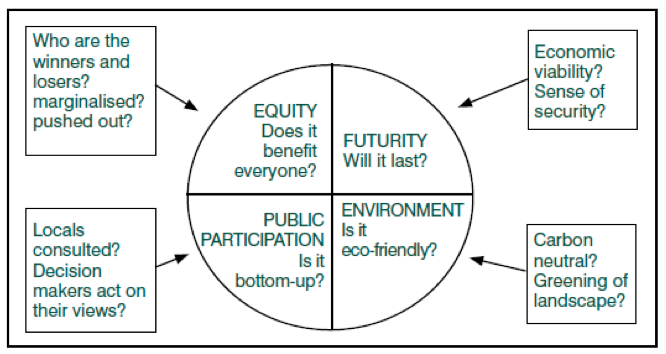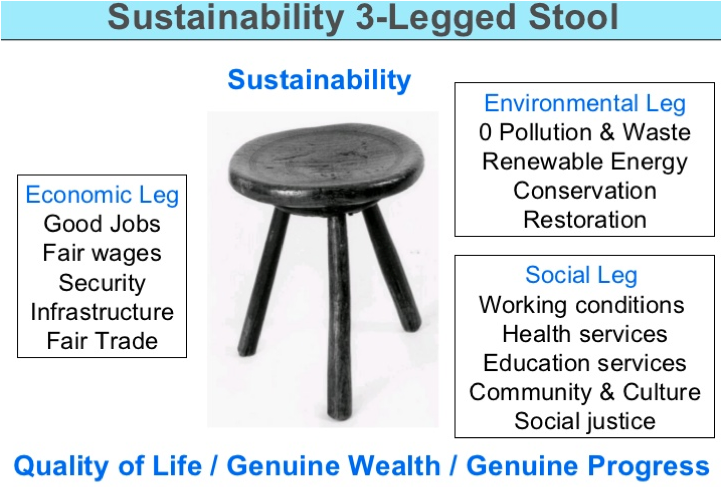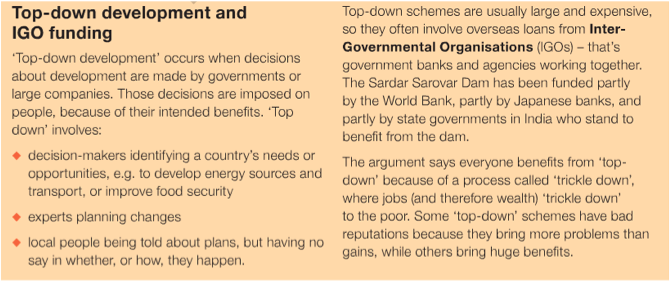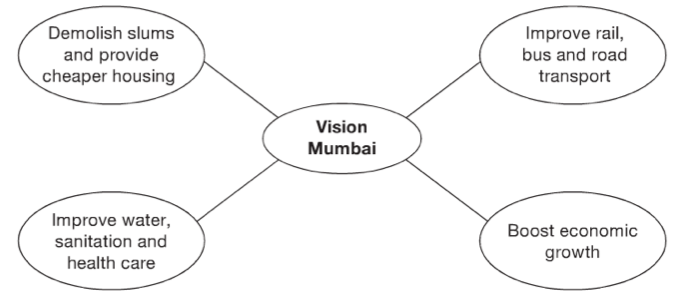Top Down Development in Mumbai
Sustainability
“Development that meets the needs of the present without compromising the ability of future generations to meet their own needs”.
Models
Top Down Development
Vision Mumbai
In 2003, a report by American firm McKinsey, called ‘Vision Mumbai’, suggested investing $40 billion to improve Mumbai. It involved a partnership between government, property companies and investors – so was typical of top-down development. Completion would be by 2050.
The basic problem it tried to solve was Mumbai’s worsening quality of life. Slums have multiplied, and traffic congestion, pollution and water quality are all worse than in 2000.
The plan was to transform Mumbai with ambitious targets including:
- Building one million low cost homes and reducing slums
- Improving transport infrastructure by road and rail
- Improving air and water quality by reducing pollution
Vision Mumbai was based on some quick targets:
- Restore 325 ‘green’ spaces that were polluted and used for dumping waste
- Build 300 extra public toilets
- But the main plan was based on property managements.
- Dharavi (slum) would be demolished. Its location next to Mumbai’s financial district made it worth $10 billion! Developers would buy land at a discount and redevelop it.
- High-rise blocks for slum dwellers would be built next to shopping malls, offices and luxury apartments.
Benefits and Problems
Benefits:
- By 2007, 200,000 people were moved, and 45,000 homes demolished in Dharavi. New flats replaced slums.
- Piped water and sewerage systems were established for new flats.
- By 2015, 72 new trains were introduced on Mumbai’s railways. Platforms were raised to prevent people falling into the ‘gaps’ between trains and platforms – the cause of many deaths.
- In 2015, new measures were introduced to improve air quality.
Costs:
- Many prefer slum improvement (e.g. piped water, sewerage treatment) to demolition.
- New 14-storey apartment blocks have split communities.
- Rents cost more than in the slums.
- Small workshops would have to move or go out of business, affecting Mumbai’s recycling industry.
- Many residents believe that ‘Vision Mumbai’ benefits only the rich and powerful.
People in Dhavari don’t like the changes.
- What is sustainability?
- Your answer should include: Sustainable / Development
- Explain how 'Vision Mumbai' is top-down and what is does.
- Your answer should include: Government / Investment / Improvement
- Discuss the advantages and disadvantages of Vision Mumbai, is it sustainable?
- Your answer should include: Transport / Local / People / Rent / Dharavi



